Thingscon Salon : Ideation
05/22/2018
Het Dott research team zette afgelopen maand een Thingscon Salon rond ‘internet of things ideation’ op poten. In een wereld waarin producten steeds vaker een combinatie van digitale en fysieke componenten zijn, is het eens zo belangrijk om elk van deze onderdelen bewust te ontwerpen tot een rendabele en impactvolle oplossing die steek houdt, die beantwoordt aan de noden van de gebruikers en die de juiste plek kan verwerven in een robuust ecosysteem.
Geconnecteerde producten?
Het ontwerpen en ontwikkelen van geconnecteerde producten en diensten zijn een logische evolutie voor Studio Dott. Om de mogelijkheden hiervan te exploreren voor onze klanten werken we zelf proactief aan methodes en tools om samen met alle betrokken stakeholders tot betekenisvolle, internetgeconnecteerde oplossingen te komen.
Uiteraard willen we het warm water niet opnieuw uitvinden, en daarom werken we actief samen met Europese domeinexperten. Het organiseren van dit Thingscon Salon is één van de resultaten van deze complementaire samenwerking.
(Dit artikel is verder in het Engels geschreven, gezien het ook de voertaal was tijdens het event.)
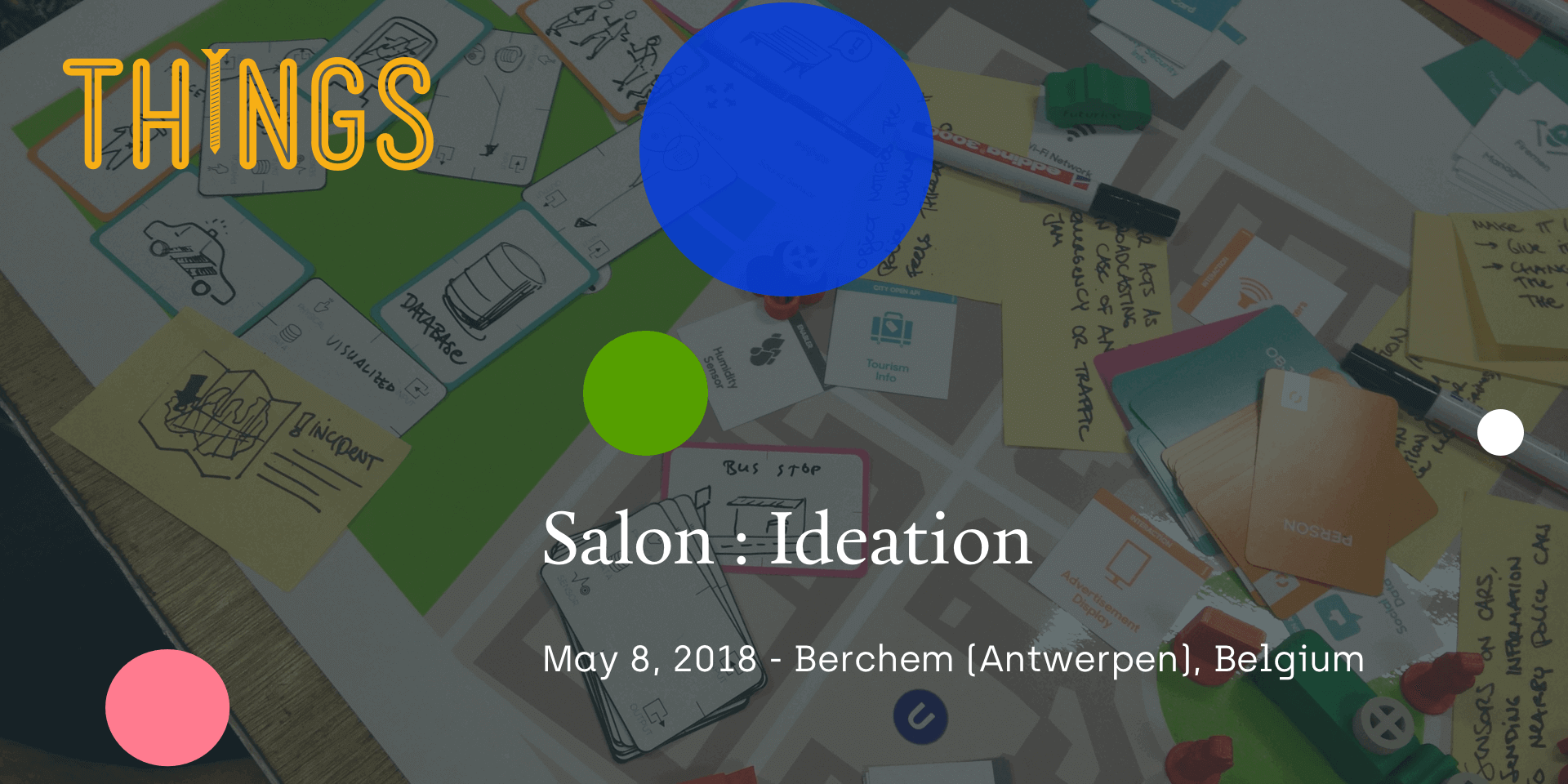
Ideation & IoT
Reporting from Studio Dott x Thingscon Salon
Studio Dott hosted a Thingscon Salon which focussed on “internet of things idea generation”. ThingsCon is a global community and event platform for Internet of Things practitioners. Their overarching mission is to foster the creation of a human-centric and responsible Internet of Things (IoT).
At Studio Dott, we actively conduct research on how to help customers build relevant, meaningful and robust ‘connected products’.
We consciously and deliberately invited 5 speakers from across Europe. Each of the speakers took a different perspective on IoT idea generation. This way we lined up an interesting mix of speakers from academia and industry, covering topics like ideation methods for IoT, the current landscape and future opportunities and challenges.
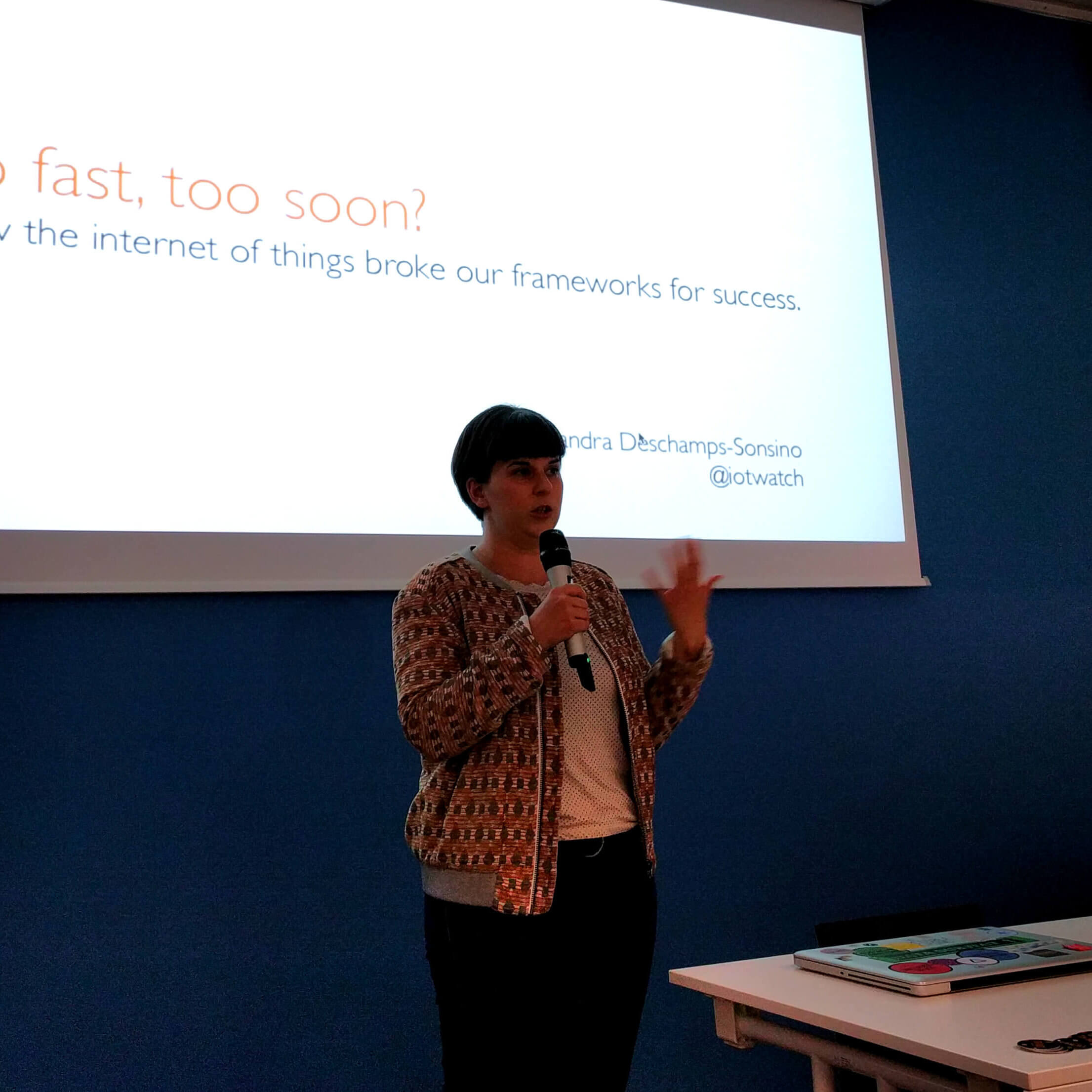
Alexandra Deschamps-Sonsino
Alex opened the event by stating several known, but less often stated, secrets of designing IoT products. One of her key points was that when designing, taking the whole lifecycle into account - including support and maintenance - is something very different for an IoT product.
Currently, metrics for success are too often still built upon the number of sales, which is something we should re-evaluate within an IoT context. Thinking about, and consciously designing for the full lifecycle of a network connected, digital product, are critical. Alex pointed to the importance of involving topical experts (e.g. on security or ethics) throughout the design process of an IoT product. Also, the role of education should be re-assessed in order to rebuild novel frameworks for success.
Alex is currently working on the iotmark, an open certification mark for IoT, which can help in creating such a framework.
Anthony Liekens
Anthony reported on the process he has went through together with a group of students at the Thomas More university of applied sciences.
During his course, students are introduced to designing software and hardware components, and get confronted with hardware-related barriers compared to the more flexible and more limitless environment or software. Anthony shared a couple of success stories, proving that it is not straightforward to create a ‘useful’ application that, at the same time, is viable from a business perspective.
His students developed a.o. BearWear, a product and service that helps to ‘herd’ larger groups of youngsters during a school trip. Another result was DrainWatch, a sensor that can be mounted inside potholes to keep track of overflowing sewage pipes and alert the relevant stakeholders when critical levels are exceeded.
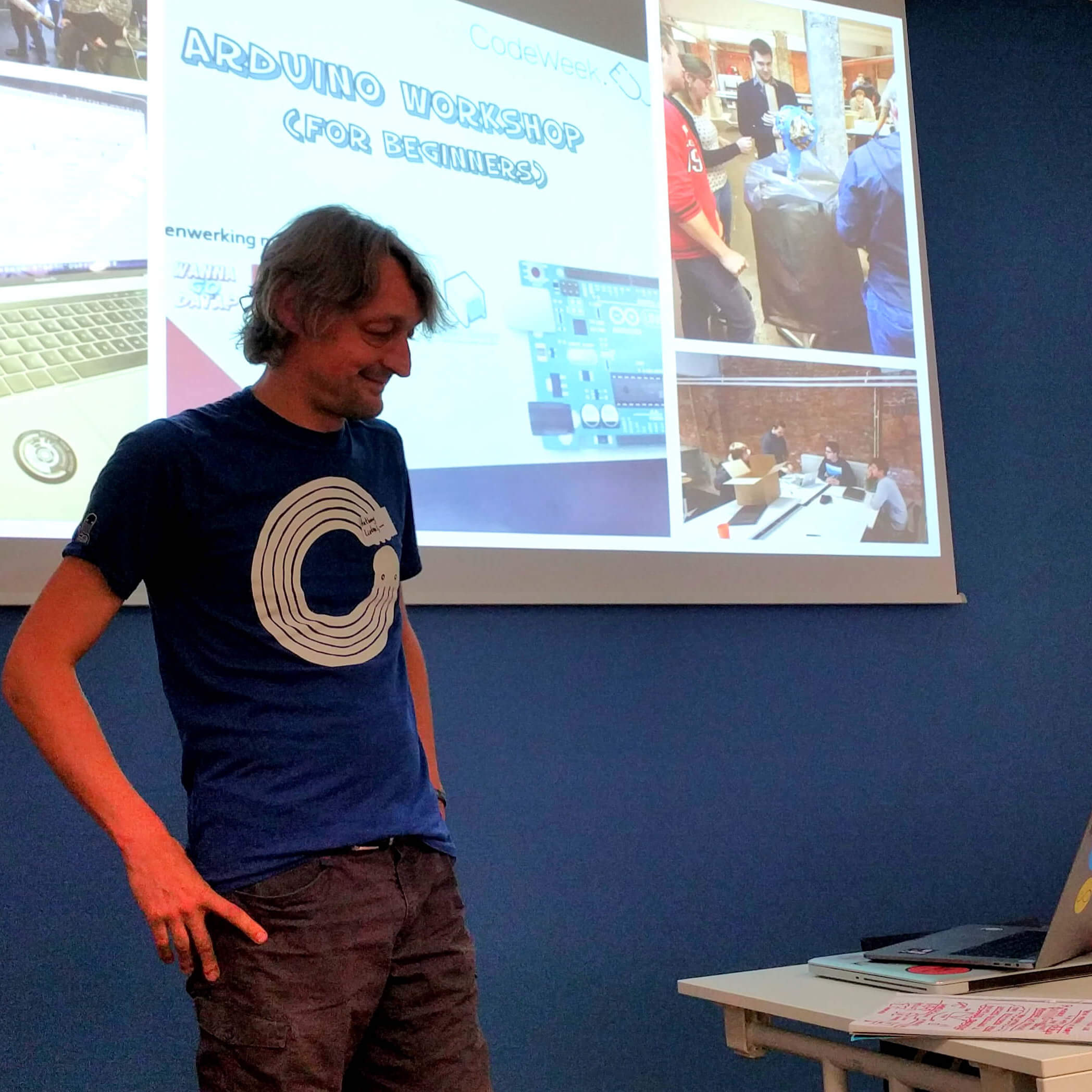
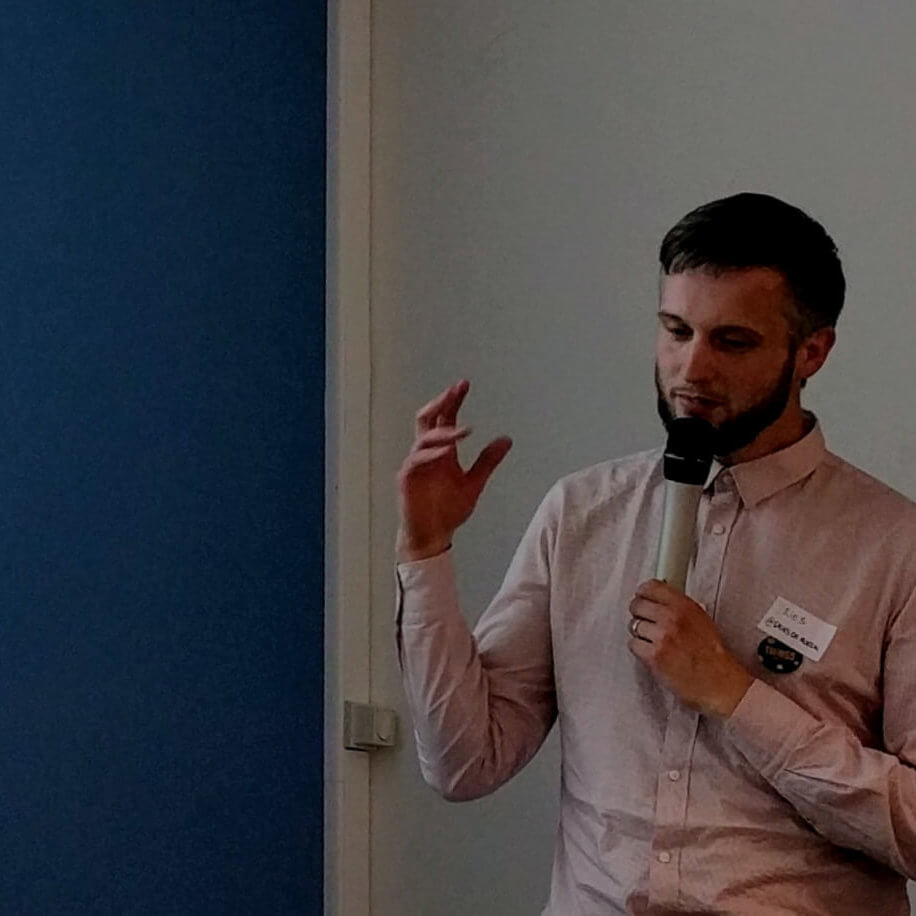
Dries De Roeck
The focus of Dries’ PhD research is on how design processes change when products become networked and digitally connected.
In his talk, Dries shared 2 elements that greatly influence the design process of IoT products. Firstly, we should be conscious that ‘physical’ and ‘digital’ design & development should happen at the same time. Knowing and making explicity why something is created as a physical or a digital ‘thing’ is essential. Secondly, the ‘design’ and ‘usage’ period are not strict. Firmware upgrades will, for instance, improve or enrich the product functionality and its value proposition over time.
In order to deliberately cope with this complexity, Dries emphasises the need for more lightweight design tools. This type of tool can typically be applied in very flexible ways without imposing a heavy structure or design process. This makes them accessible and usable for smallscale startups, agencies and larger companies. Together with carefully selected partners, Dries is collecting such tools on ideasofthings.eu.
Albrecht Kurze
Together with the ‘Miteinander' group at TU Chemnitz, Albrecht works on ideation tools for the internet of things. Remarkable about his work the ideation tools created are working pieces of hardware, which make iot technology experienceable.
Albrecht talked about the Loaded Dice project, and shared some specifics about the design process that led up to the tool. Basically, the Loaded Dice is an interactive tool intended to support co-design activities within the area of smart connected devices.
Loaded Dice consists of 2 wireless connected Arduino based, 3D-printed cubes consisting of various sensors in one cube and various actuators in the other. The sides of the dice which face upward become connected to each other, allowing people to ‘experience’ the functioning of a sensor and an actuator. Together with a card based ideation tool, Loaded Dice helps define conceptual scenarios for smart and connected devices.
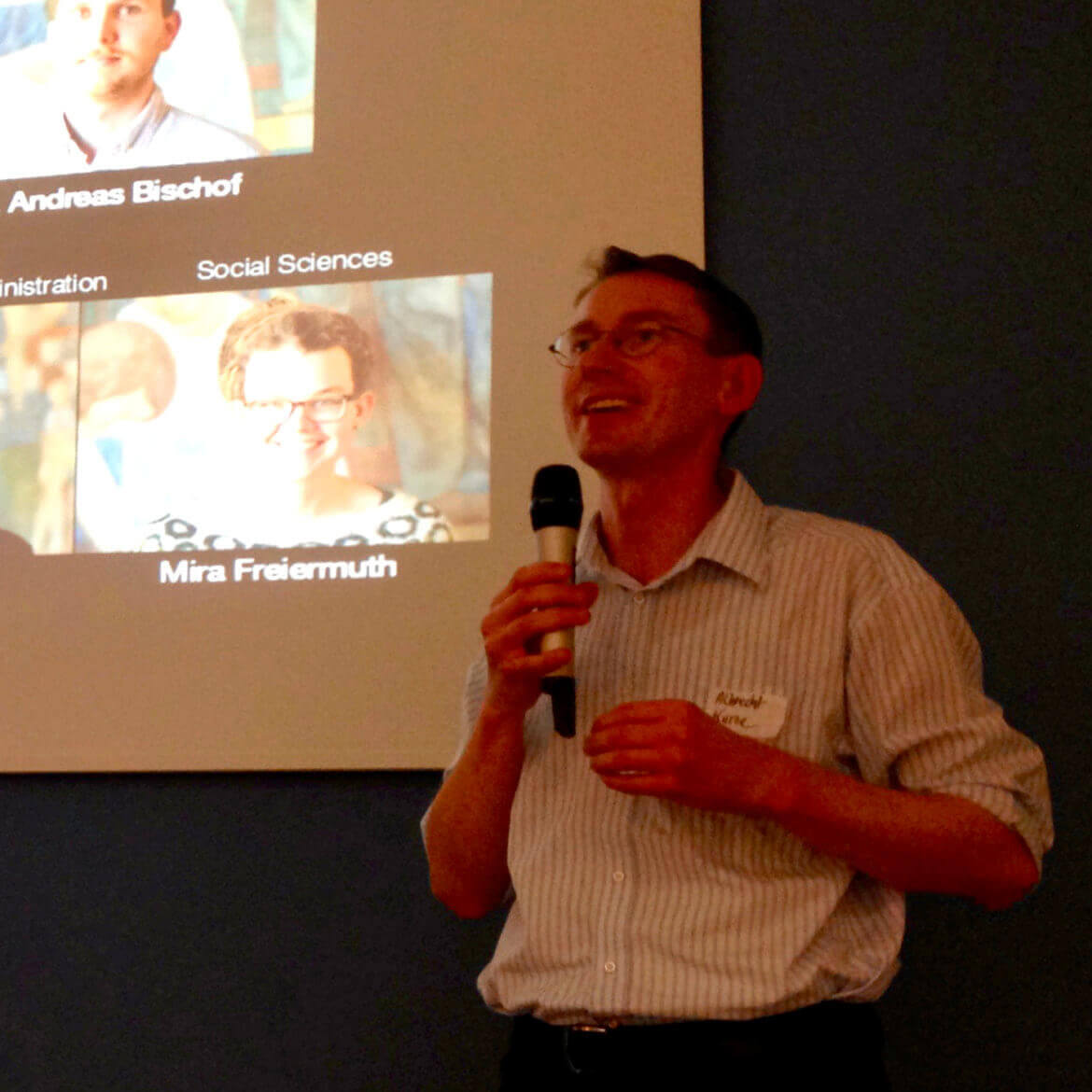
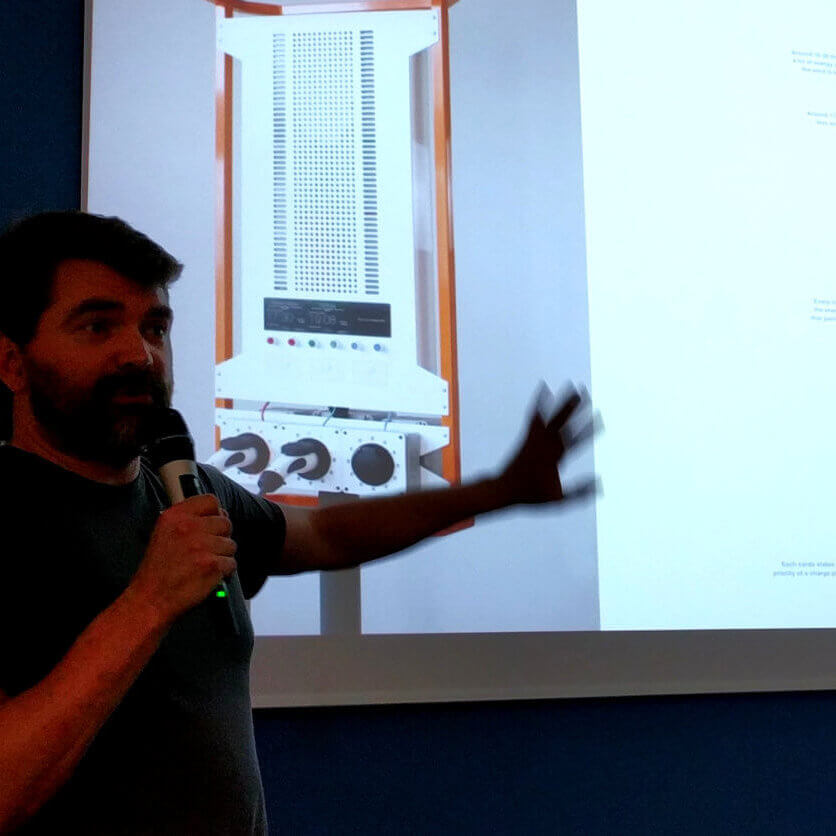
Harm van Beek
Harm closed the event by sharing some details about their project ‘The transparent charging station’.
Harm very openly talked about ‘the mess’ the design process tends to be. Harm pointed out that very rarely a designer or developer goes through an entire development cycle. In most cases, the project has to build further on legacy ideas or deal with technological constraints. What Harm showed is that creating internet connected products is still a very abstract thing, and by making it tacit through the creation of prototypes and experienceable futures it becomes possible to actually talk about the deeper elements behind a concept.
The ‘transparent charging station’ is a good example of this, it was eventually created as a prototype to support and facilitate debate around electrical charging solutions on a policy level.
"An important part of the ideation process is to take the time to make digital and physical interactions explicit."
~Dries De Roeck.
There was more!
The Thingscon Salon was the public part of a two-day gathering. On the second day, a number of IoT experts participated in a focussed workshop on design processes for hybrid product service systems. This workshop enriches the findings of the Baekeland research project Studio Dott is currently conducting.
A framework for IoT conceptualisation
Although the outcomes of the workshop are still being processed, the workshop focussed on validating a theoretical model which can be used to better frame the design space that opens up when solutions increasingly become hybrids of digital and physical components.
Value²
In the current version of our IoT conceptualisation framework, every design activity has an impact on either ‘user value’ or ‘company value’. The first focussing on the intangible but experienceable aspects, the latter focussing on business viability.
For example, when a company decides to add a sensor to a product in order to ‘track’ user behaviour, it could have a positive impact on the company value (i.e. it provides valuable data for the company). At the same time, user value might decrease because people feel monitored by a system they can’t control. Typically, user value is a lot more difficult to objectively ‘measure’ compared to company value.
Why?
With our model-in-progress, we want to provide companies with strategies, methods and tools allowing companies and organisations to carefully take informed decisions about aspects impacting user and company value when designing and developing new, digitally connected products and services.

High level version of the model-in-progress
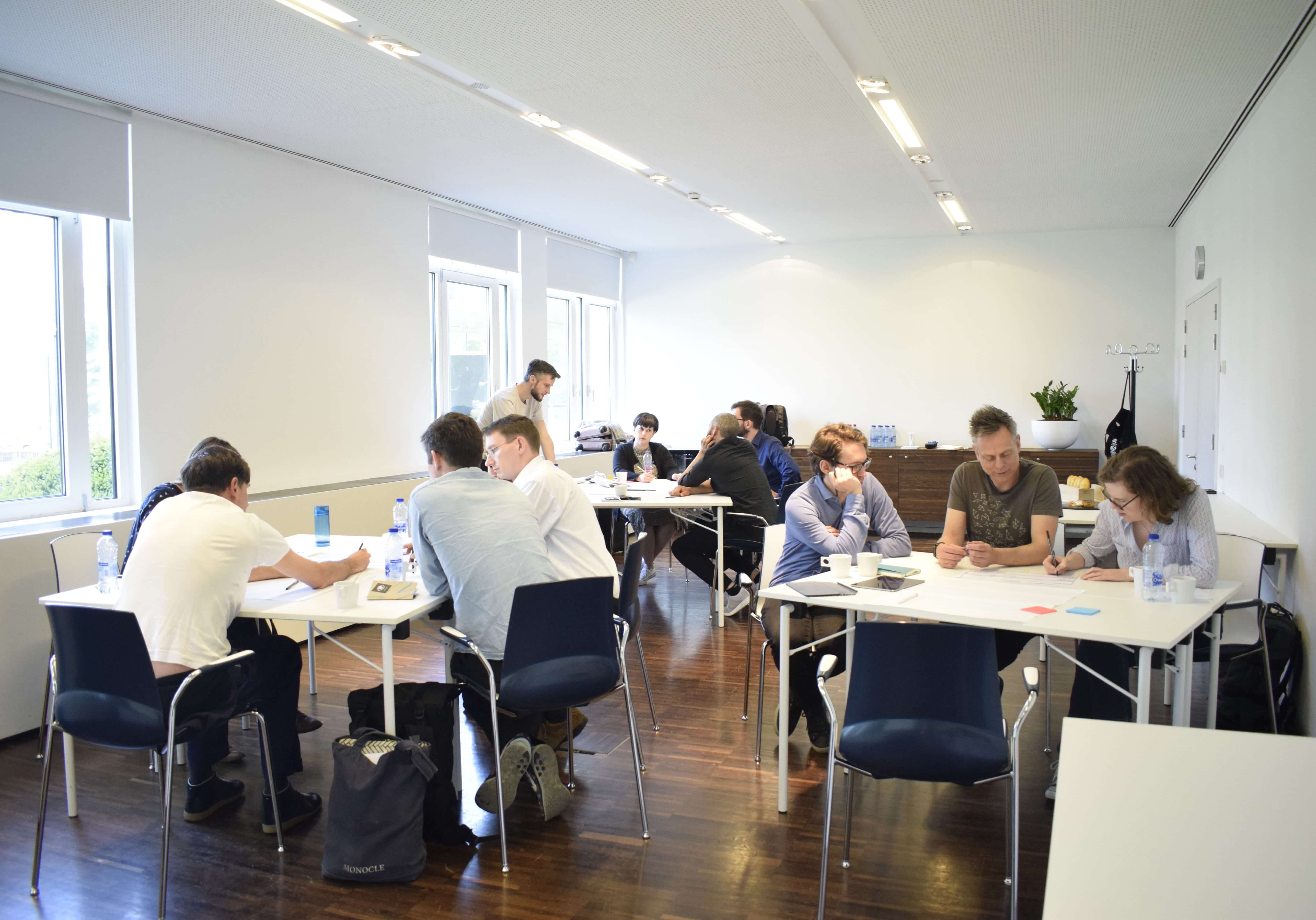
A group of 12 domain experts worked and iterated on the model
Thingscon Salon : Ideation
05/22/2018
The Dott Research team hosted a Thingscon Salon which was all about 'internet of things ideation'. We hosted this event because as we see products around us evolving towards a combination of digital and phyiscal components, it becomes ever so important to design each of these aspects in a concious way.
Doing so, we should aim to design and create impactful solutions, which answer an actual user need and become part of robustly crafted ecosystems. During this event, we wanted to debate and share thoughts on how internet-connected product concepts change the way idea generation is approached.

Ideation & IoT
Reporting from Studio Dott x Thingscon Salon
Studio Dott hosted a Thingscon Salon which focussed on “internet of things idea generation”. ThingsCon is a global community and event platform for Internet of Things practitioners. Their overarching mission is to foster the creation of a human-centric and responsible Internet of Things (IoT).
At Studio Dott, we actively conduct research on how to help customers build relevant, meaningful and robust ‘connected products’.
We consciously and deliberately invited 5 speakers from across Europe. Each of the speakers took a different perspective on IoT idea generation. This way we lined up an interesting mix of speakers from academia and industry, covering topics like ideation methods for IoT, the current landscape and future opportunities and challenges.
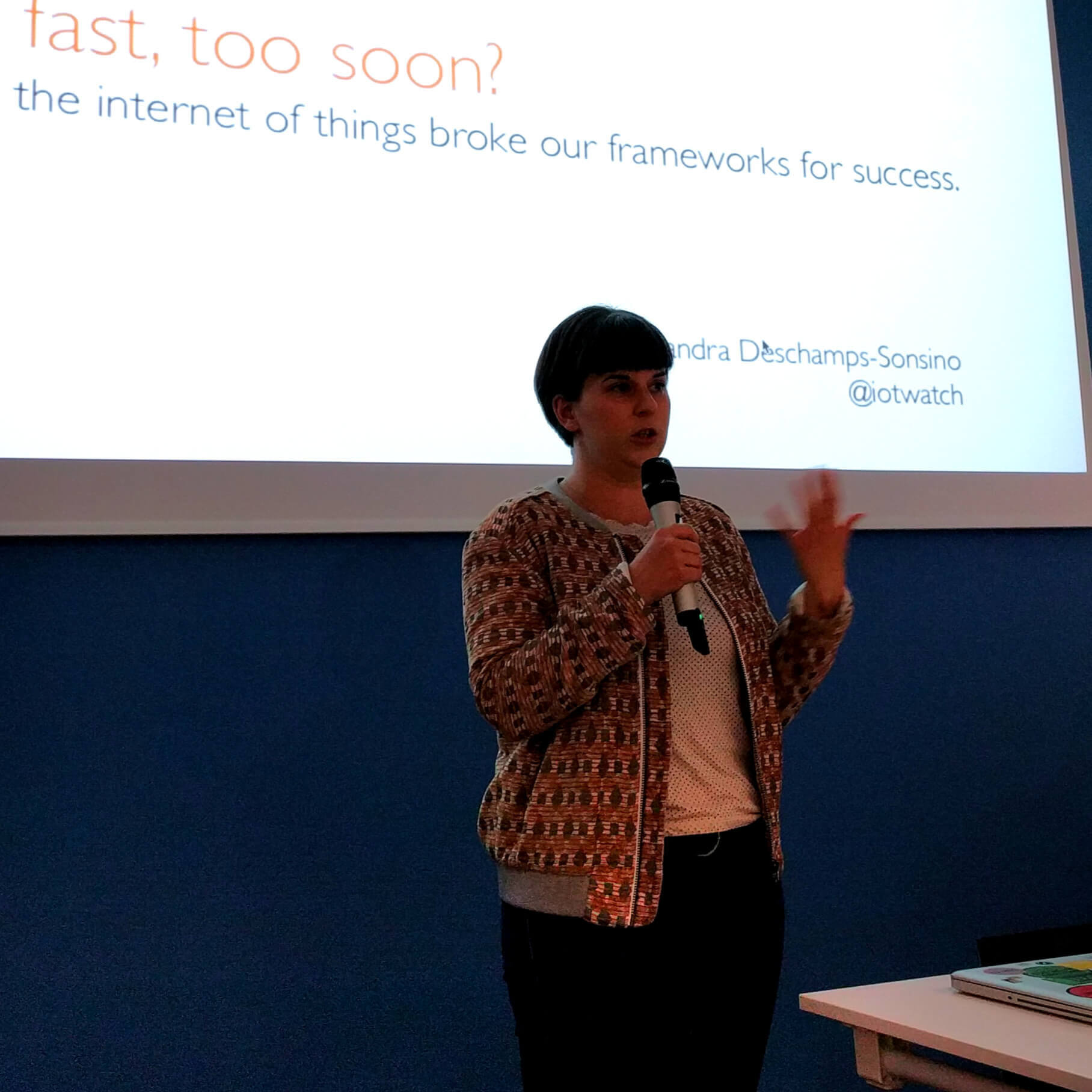
Alexandra Deschamps-Sonsino
Alex opened the event by stating several known, but less often stated, secrets of designing IoT products. One of her key points was that when designing, taking the whole lifecycle into account - including support and maintenance - is something very different for an IoT product.
Currently, metrics for success are too often still built upon the number of sales, which is something we should re-evaluate within an IoT context. Thinking about, and consciously designing for the full lifecycle of a network connected, digital product, are critical. Alex pointed to the importance of involving topical experts (e.g. on security or ethics) throughout the design process of an IoT product. Also, the role of education should be re-assessed in order to rebuild novel frameworks for success.
Alex is currently working on the iotmark, an open certification mark for IoT, which can help in creating such a framework.
Anthony Liekens
Anthony reported on the process he has went through together with a group of students at the Thomas More university of applied sciences.
During his course, students are introduced to designing software and hardware components, and get confronted with hardware-related barriers compared to the more flexible and more limitless environment or software. Anthony shared a couple of success stories, proving that it is not straightforward to create a ‘useful’ application that, at the same time, is viable from a business perspective.
His students developed a.o. BearWear, a product and service that helps to ‘herd’ larger groups of youngsters during a school trip. Another result was DrainWatch, a sensor that can be mounted inside potholes to keep track of overflowing sewage pipes and alert the relevant stakeholders when critical levels are exceeded.
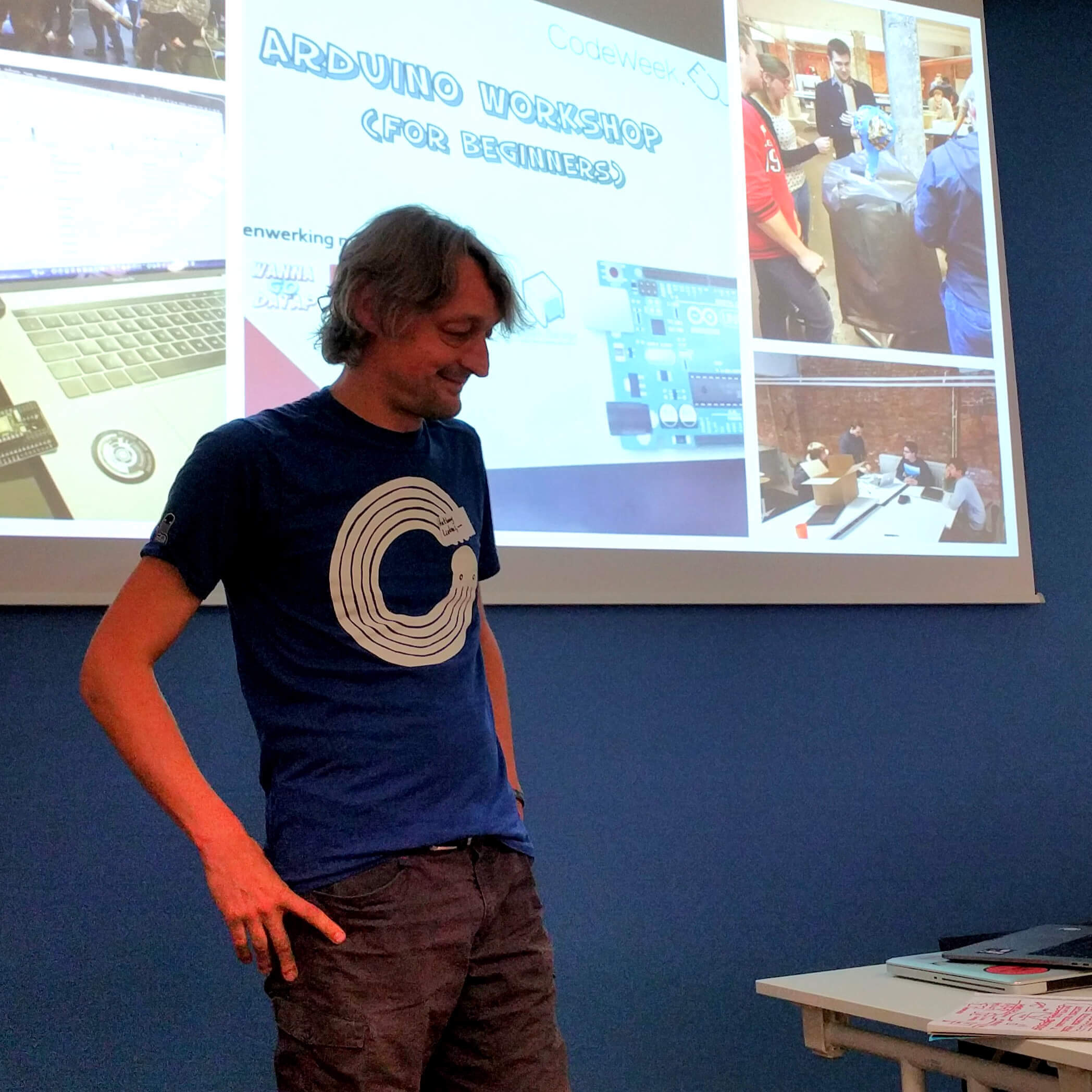
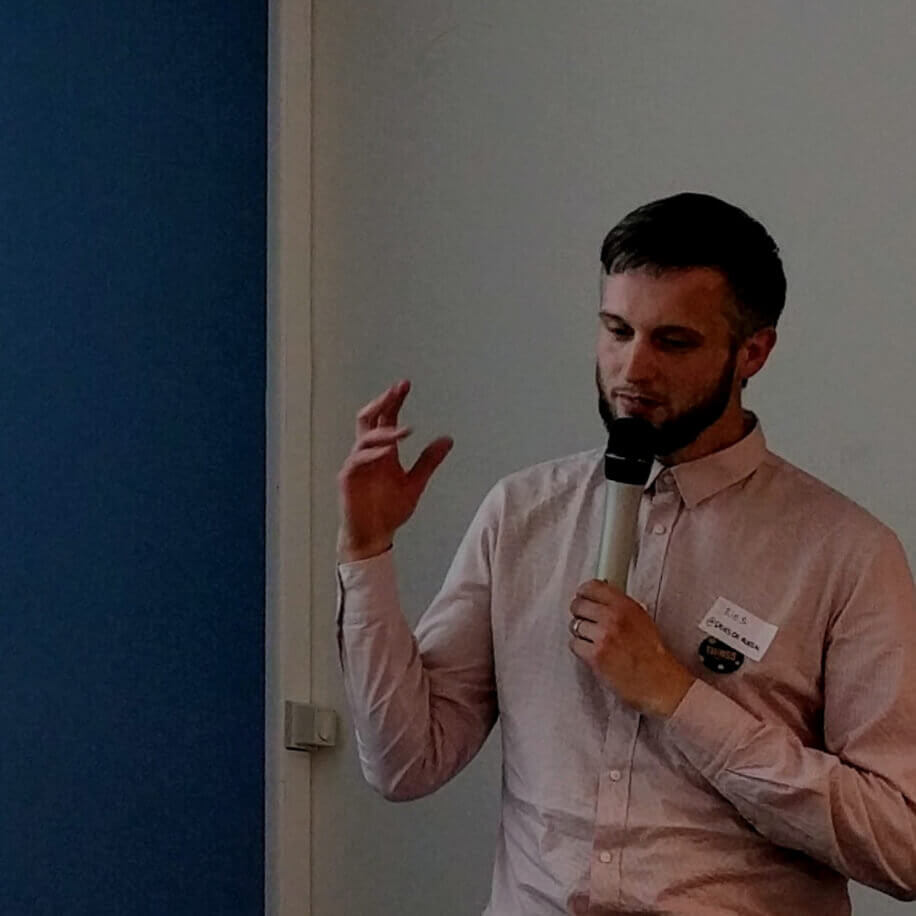
Dries De Roeck
The focus of Dries’ PhD research is on how design processes change when products become networked and digitally connected.
In his talk, Dries shared 2 elements that greatly influence the design process of IoT products. Firstly, we should be conscious that ‘physical’ and ‘digital’ design & development should happen at the same time. Knowing and making explicity why something is created as a physical or a digital ‘thing’ is essential. Secondly, the ‘design’ and ‘usage’ period are not strict. Firmware upgrades will, for instance, improve or enrich the product functionality and its value proposition over time.
In order to deliberately cope with this complexity, Dries emphasises the need for more lightweight design tools. This type of tool can typically be applied in very flexible ways without imposing a heavy structure or design process. This makes them accessible and usable for smallscale startups, agencies and larger companies. Together with carefully selected partners, Dries is collecting such tools on ideasofthings.eu.
Albrecht Kurze
Together with the ‘Miteinander' group at TU Chemnitz, Albrecht works on ideation tools for the internet of things. Remarkable about his work the ideation tools created are working pieces of hardware, which make iot technology experienceable.
Albrecht talked about the Loaded Dice project, and shared some specifics about the design process that led up to the tool. Basically, the Loaded Dice is an interactive tool intended to support co-design activities within the area of smart connected devices.
Loaded Dice consists of 2 wireless connected Arduino based, 3D-printed cubes consisting of various sensors in one cube and various actuators in the other. The sides of the dice which face upward become connected to each other, allowing people to ‘experience’ the functioning of a sensor and an actuator. Together with a card based ideation tool, Loaded Dice helps define conceptual scenarios for smart and connected devices.

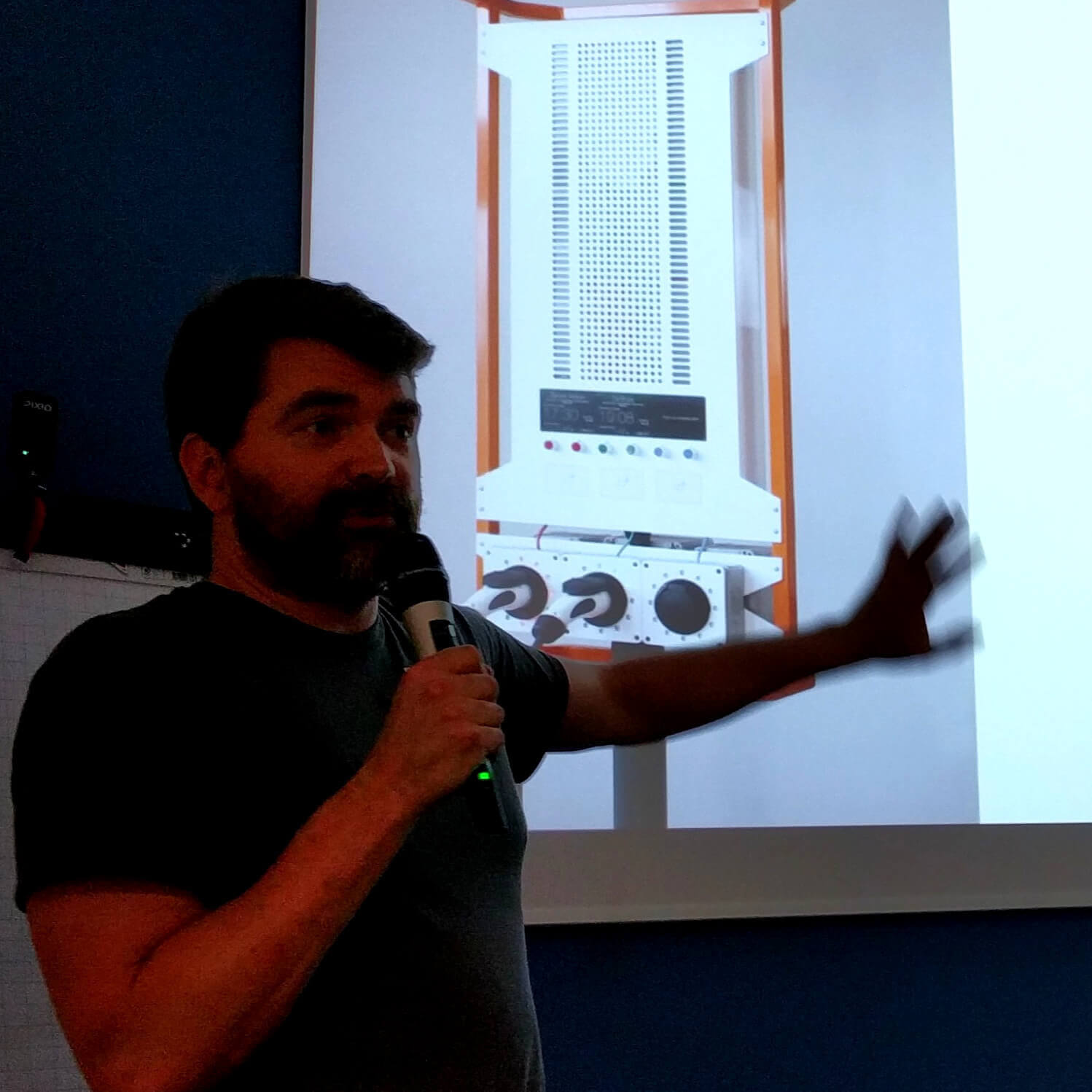
Harm van Beek
Harm closed the event by sharing some details about their project ‘The transparent charging station’.
Harm very openly talked about ‘the mess’ the design process tends to be. Harm pointed out that very rarely a designer or developer goes through an entire development cycle. In most cases, the project has to build further on legacy ideas or deal with technological constraints. What Harm showed is that creating internet connected products is still a very abstract thing, and by making it tacit through the creation of prototypes and experienceable futures it becomes possible to actually talk about the deeper elements behind a concept.
The ‘transparent charging station’ is a good example of this, it was eventually created as a prototype to support and facilitate debate around electrical charging solutions on a policy level.
"An important part of the ideation process is to take the time to make digital and physical interactions explicit."
~Dries De Roeck.
There was more!
The Thingscon Salon was the public part of a two-day gathering. On the second day, a number of IoT experts participated in a focussed workshop on design processes for hybrid product service systems. This workshop enriches the findings of the Baekeland research project Studio Dott is currently conducting.
A framework for IoT conceptualisation
Although the outcomes of the workshop are still being processed, the workshop focussed on validating a theoretical model which can be used to better frame the design space that opens up when solutions increasingly become hybrids of digital and physical components.
Value²
In the current version of our IoT conceptualisation framework, every design activity has an impact on either ‘user value’ or ‘company value’. The first focussing on the intangible but experienceable aspects, the latter focussing on business viability.
For example, when a company decides to add a sensor to a product in order to ‘track’ user behaviour, it could have a positive impact on the company value (i.e. it provides valuable data for the company). At the same time, user value might decrease because people feel monitored by a system they can’t control. Typically, user value is a lot more difficult to objectively ‘measure’ compared to company value.
Why?
With our model-in-progress, we want to provide companies with strategies, methods and tools allowing companies and organisations to carefully take informed decisions about aspects impacting user and company value when designing and developing new, digitally connected products and services.

High level version of the model-in-progress


